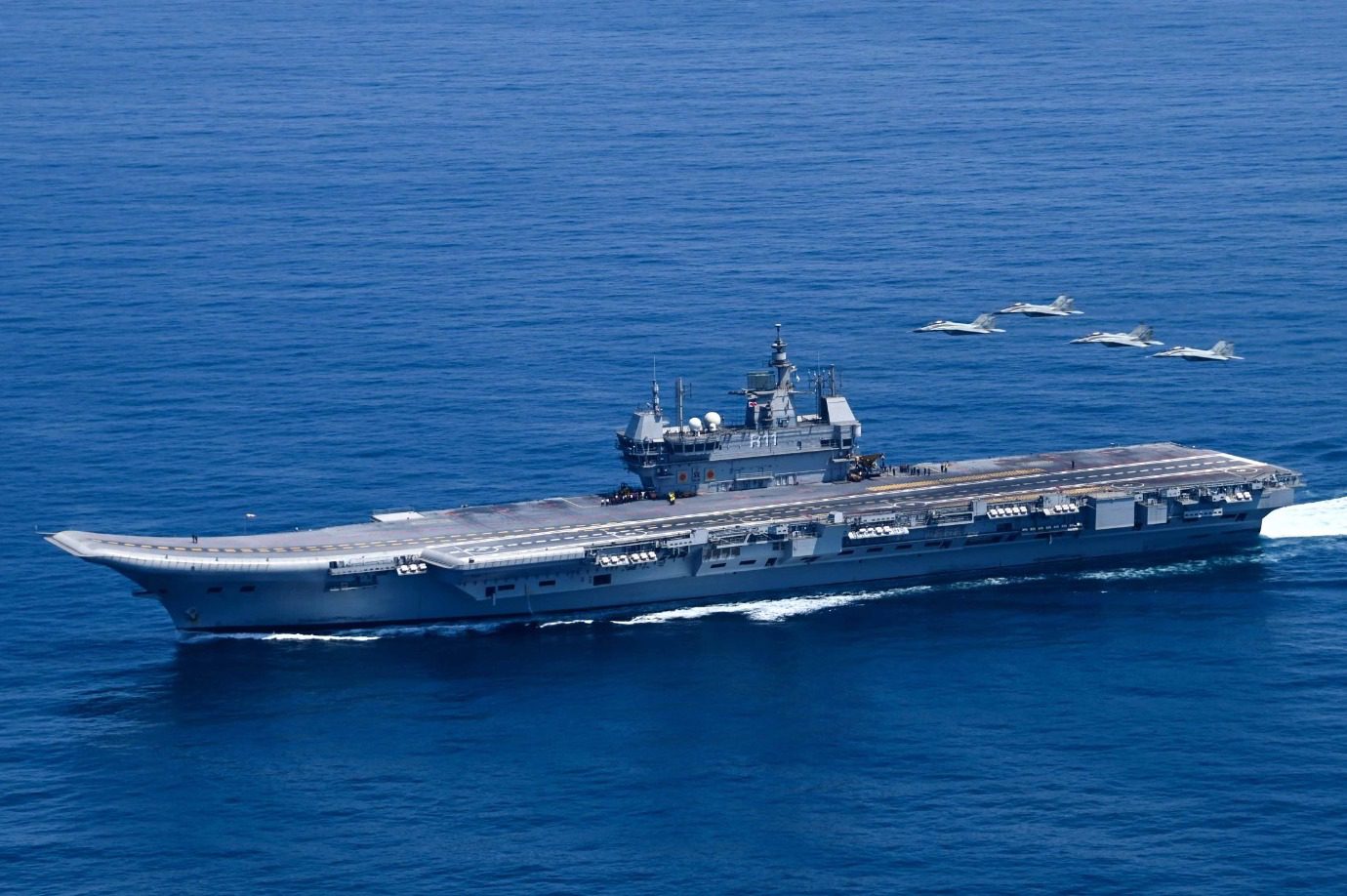Indian Navy to Order Another Vikrant-Class Aircraft Carrier
New Carrier Will Boost India’s Blue-Water Capabilities
The Indian Navy has placed an order for a second Vikrant-class aircraft carrier, according to a statement released by the Ministry of Defense on September 21, 2023. The new carrier will be built by Cochin Shipyard Limited (CSL), which also built the first Vikrant-class carrier, INS Vikrant.
The Vikrant class is a type of short take-off barrier arrested recovery (STOBAR) aircraft carrier. This means that aircraft can take off from the deck using a short runway, but they must land using an arrestor wire system. The Vikrant class is the largest and most advanced aircraft carrier ever built in India.
The new carrier will be similar in design to INS Vikrant, but it will incorporate some improvements. For example, it will have a more powerful propulsion system and a larger hangar deck. The carrier will also be equipped with the latest in electronic warfare and air defense systems.
The Vikrant class is designed to operate a variety of aircraft, including:
- Mikoyan MiG-29K Fulcrum: A multirole fighter aircraft that can be used for air superiority, air-to-ground attack, and anti-ship warfare.
-
Dassault Rafale: A fighter aircraft that the Indian Navy is procuring from France will be used for air superiority, close air support, and reconnaissance.
- Kamov Ka-28 Helix: A multi-role helicopter that can be used for anti-submarine warfare, search and rescue, and transport.
- HAL Dhruv: A medium utility helicopter that can be used for search and rescue, transport, and liaison.

The Indian Navy is also developing its own indigenous aircraft carrier-based fighter aircraft, the HAL TEDBF (Navy). The HAL TEDBF is a multi-role fighter aircraft that is expected to be inducted into service in the early 2030s.
The addition of a second Vikrant-class aircraft carrier will significantly boost the Indian Navy’s blue-water capabilities. The new carrier will give the Indian Navy the ability to project power further from its shores and to respond more effectively to threats in the Indian Ocean and beyond.
Why is India Ordering Another Vikrant-Class Aircraft Carrier?
India is ordering another Vikrant-class aircraft carrier for a number of reasons. First, the Vikrant class is a very capable aircraft carrier. It is large enough to carry a significant number of aircraft, and it is equipped with the latest in electronic warfare and air defense systems. Second, the Vikrant class is an indigenous aircraft carrier. This means that India can design and build its own aircraft carriers, which gives it greater strategic independence. Third, India is facing a growing challenge from China in the Indian Ocean. China has been rapidly expanding its military capabilities, and it has been building new bases in the Indian Ocean. India needs to bolster its own military capabilities in order to counter the Chinese threat.
What Impact Will the New Aircraft Carrier Have?
The new aircraft carrier will have a significant impact on the Indian Navy’s blue-water capabilities. The carrier will give the Indian Navy the ability to project power further from its shores and to respond more effectively to threats in the Indian Ocean and beyond. The carrier will also serve as a deterrent to potential adversaries.
The new aircraft carrier will also have a significant impact on the Indian economy. The construction of the carrier will create jobs and boost the growth of the Indian shipbuilding industry. The carrier will also require a large number of suppliers to provide it with food, fuel, and other supplies. This will create even more jobs and boost the growth of the Indian economy.
Overall, the Indian Navy’s order for a second Vikrant-class aircraft carrier is a positive development for India. The new carrier will significantly boost India’s blue-water capabilities, and it will also have a positive impact on the Indian economy.
